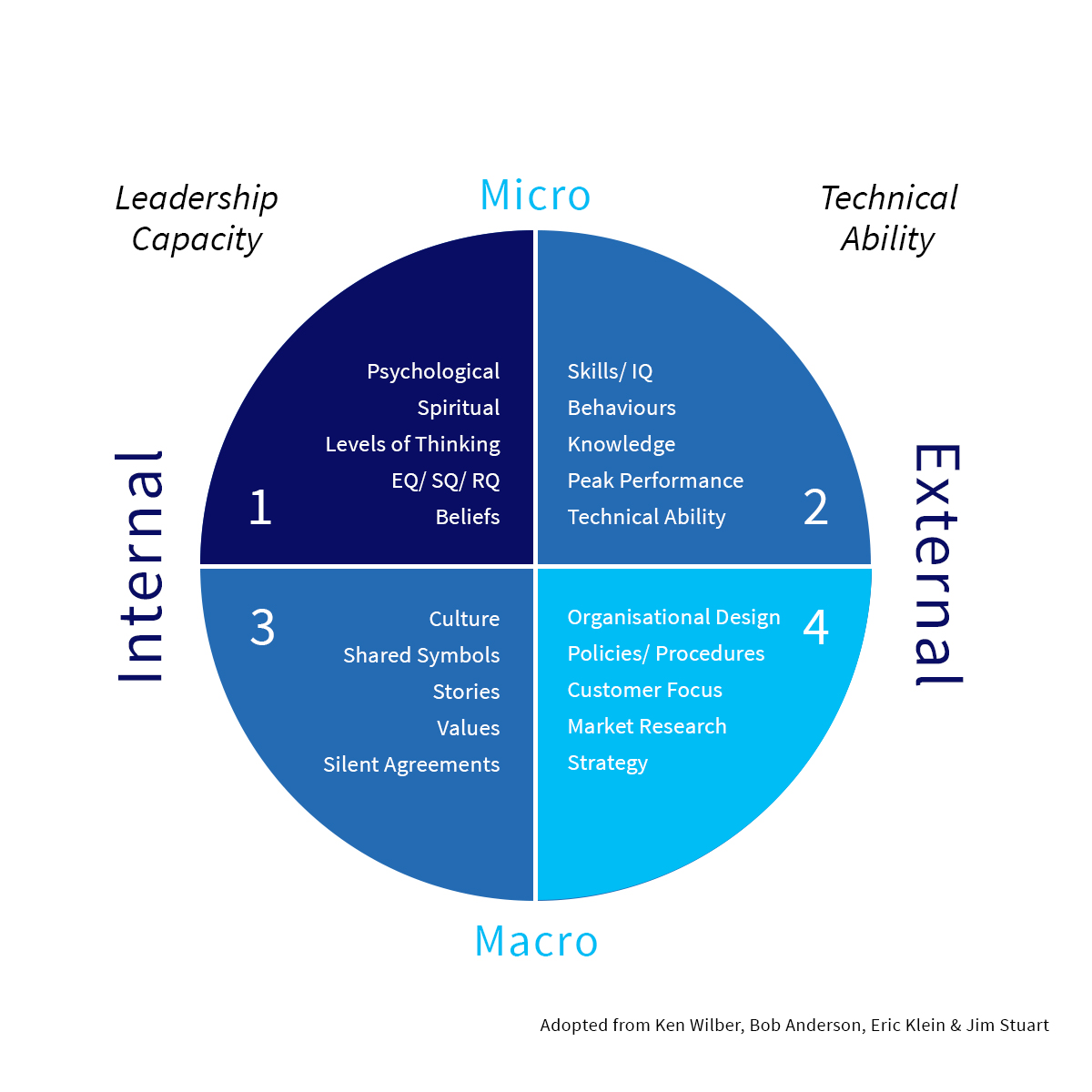
How can leaders change an organisation from within?
February 2015
Previously published in Management Today Magazine
Organisations are living systems. They evolve over time in response to the forces at play that influence their development. Those forces may be internal or external. Sometimes it is a special capability someone brings, a change in the market, a demand from a significant client, a complication such as a resource no longer being available, an expansion, a contraction or solving a certain problem.
How people respond to events and circumstances shapes the organisation and its ability to serve the market. The leadership of the organisation determines this as they typically have the biggest influence on the organisational system.
For a system to change it needs to change from within and it must involve all aspect of the system as an integral whole. Organisations are designed to create order and maintain it. If you want them to change you have to attend to what is required for it to change.
The organisation is a complex integrated system where all the elements are interconnected and as one change occurs so do others not necessarily in a predictable way. In designing change efforts we need to bring the whole system into view, both the tangible and intangible and understand the interconnectedness and interdependencies. Only when leaders can intentionally address all parts of the system effectively will change efforts deliver the desired results.
What drives most organisational change efforts is the desire to achieve the vision for the organisation and the realisation that the current situation has limitations, some things are working against achieving that outcome and therefore need to change. How can leaders change an organisation from within?
 The four focus areas for organisational change
The four focus areas for organisational change
The individual
A focus on the person as an individual (individual/internal) emphasises what makes a person tick, what we think and feel and how we make meaning of things. It includes our intentions, motivations, beliefs and attitudes and cognitive processes including our subconscious drivers. One individual is a significant element in a system.
A person will embrace change when it makes sense at this level. The subconscious can actively work against conscious decisions and good intentions. This is where personal inner development is important; when we have awareness we have the full potency of choice. This is the greatest source of deep lasting transformation. Leaders who have significant insight and self-awareness leverage their effectiveness in remarkable ways.
Performance
A focus on performance (Individual/External) considers what can be observed and managed, what we say and what we do. It includes our behaviour, performance, skills and results.
There are many ways that people try to achieve peak performance. Much of behavioural science focuses on this, as do performance and rewards systems. It is the outside evidence of what is going on internally. When we say one thing and do another it points to something out of our awareness that is inconsistent, usually something internal hence the interconnectedness with the Individual.
Culture
A focus on culture (Collective/Internal) examines what is important to us collectively, what values, standards and influences have currency in our group. It includes our shared purpose as enacted, reinforced values, rituals, iconic stories, and silent agreements.
It is not so much what we say but rather what we do when we are not paying attention. It is all the subtle things that communicate most influentially to shape the culture. The formal messages are not as powerful as the informal unless they both reinforce each other. A values statement won’t work unless the leaders are walking talking examples of the vision and values, even in the smallest things.
This links back to performance, what do leaders choices, decisions, actions, comments communicate moment by moment, what is the dominant pattern. To shape a culture requires awareness and mindfulness, and links back to the individual. Leaders who invest in developing their group awareness use another lever of leadership effectiveness.
Systems
A focus on systems (collective/external) explores what structures create order in the system enabling us to get things done. It includes the social, technical & organisational systems; organisational design, technology workflow, policies and processes. The structure itself communicates cultural messages. The processes that get priority do too.
A fundamental principle for effective systems is that they are designed well; structure is the dominant influence on performance. A well-designed process enables and enhances performance. If a system is poorly designed it will create pressure on other parts of the system, which then require people to act to overcome the poor design.
Different people will do that in different ways that can lead to conflicts in the culture, disruption of relationships, demands on skills and impacts on people’s motivation.
Challenges to Change
The greatest challenge with effecting change is to work on all four areas and ensure they support and reinforce each other rather than inadvertently work in conflict.
It is common in organisations to work diligently on performance and systems, and expect that to work. This makes sense as it plays into the technical skills that people develop to advance in organisational life. Being good at your work and getting results typically leads to advancement.
An approach on only two areas is not enough to lead complex organisations in rapid changing environments that require flexibility, innovation and agility – the capabilities of adaptive leadership. These are leadership game changers and require development and advanced capability in the areas of people and culture. Equally organisations that focus on only people and culture are limited in their effectiveness.
For organisations to change it requires that everyone in the system change including the leaders. Any system will be limited by the level of consciousness of its leaders and the way that consciousness is expressed in the culture.
It is relatively easy to analyse situations objectively and identify what needs to change. The next critical step is to make it personal to see how you as a leader are part of the system and what your role is in the current situation, what you need to change in order to enable the system to change. Then go to work on what you are responsible for. This is what typically is the limiting factor of successful change initiatives, seeing others’ limitations and directing others to change without changing yourself.
Letting go of control and developing ways of building environments where people choose to step up and achieve out of a deep sense of personal purpose and vision aligned to the shared organisational purpose and vision and values arising from a personal commitment and sense of ownership. This is the most potent lever for transformational change and transformational leadership.
Published: February 2015
To learn more set up a time to have a conversation with Sarah. To get in contact please email her EA, Leanne Imbro on ea@sarahcornally.com or call 02 9801 0659.
You may publish this article as long as the following notice appears attached to the article, and you advise Sarah Cornally – info@sarahcornally.com where it will be published.
Copyright © 2016 Cornally Enterprises. Permission has been granted to publish this article in full, sourced at www.sarahcornally.com








